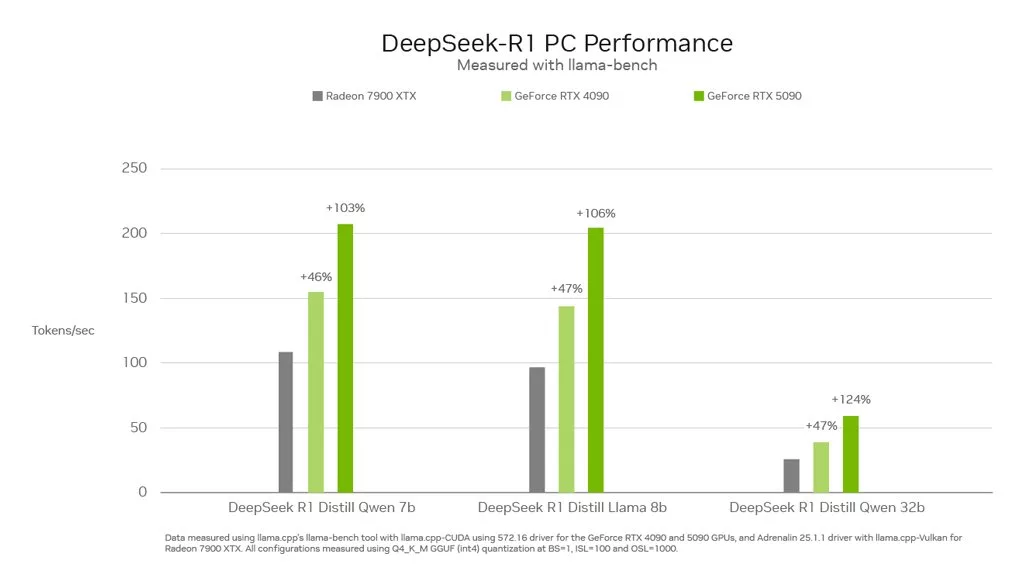In recent days, there has been a lot of controversy between the two major graphics card giants over the performance of their products in the implementation of the Dipsic artificial intelligence model, both of whom believe that their products perform better than their competitors.
Are the data published by AMD correct?
The story began when David McAffi has released a post on X -Social Network, claiming that the AMD RX 7900 XTX graphics card was better off performing the RTX 4090 and 4080 Super. According to data released by him, the AMD product with the RDNA3 architecture has been able to operate 2 percent better than the most expensive graphics of the previous generation of Nvidia, and the difference with the RTX 4080 Super reaches 5 %.
Following the release of AMD’s controversial claim, Nvidia quickly responded to it and released the results of its tests on the company’s official blog. According to the data, the RTX 5090 has been able to operate about 5 times better than the RX 7900 XTX. Also, the RTX 4090’s difference with the AMD flagship is about 2 %. This can indicate the importance of optimizing the graphics cards before testing.

Is Nvidia better or AMD better for Dipsic?
It is noteworthy that AMD graphics cards such as the RX 7900 XTX are usually not a common option for executing artificial intelligence models; But because of the RDNA3 architecture, they have some capabilities related to artificial intelligence processing and can be used to run models such as Dipsic. It should also be remembered that AMD products are much more affordable in terms of price than NVIDIA graphics cards and usually do not experience problems such as lack of market supply.
RCO NEWS
















